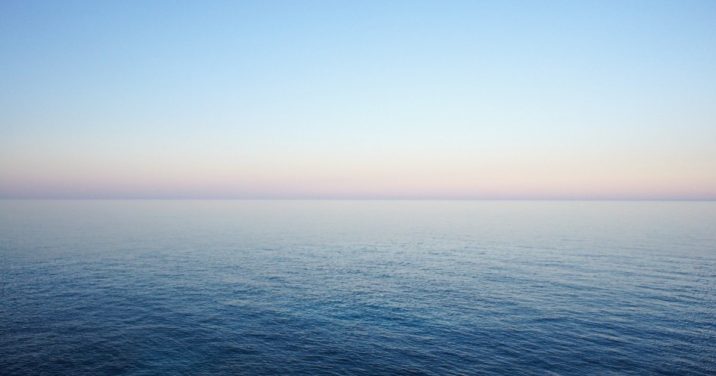In the new book Faith in the Wilderness: Words of Exhortation from the Chinese Church (Kirkdale Press, 2022; foreword by Tim Keller), Chinese house church pastor Paul Peng urges Western Christians to look to the future “sea of glass” (Revelation 15) as a source of current hope.
***
In the midst of the pandemic, I made an observation: it was easy for people to fall into one or the other of two opposite extremes. Some people spent many hours a day reading through the news, consuming the tragedy experienced by each family in the midst of the pandemic, the various sins and distortions brought about by an unjust system, and all of the accompanying absurdities. These people got more and more caught up in the bad news and became increasingly desperate, angry, and miserable.
Meanwhile, there were others who did not care and said, “Looking at all of this disturbs my peace and quiet. Solving this pandemic is the government’s job.” If we do not know the path of God’s righteousness in the midst of suffering, then we will choose either to live in a self-constructed illusion of quietness, or we will jump in headfirst and the endless suffering will overwhelm us and make our hearts bitter.
But if we look to Revelation 15, we find that before God brings his people into tribulation, he gives them reassurance rooted in the gospel to withstand it. Those who were victorious in their earthly battles stand by the shore of a sea of glass in heaven, worshiping God. This sea of glass—the sea of hope—is a biblical image that encompasses our suffering. It is a grace that connects the chaos of our earthly lives with the transparent sea of glass of the future, providing us with a way through our suffering.
A calm sea in Revelation 15
Revelation 15 is shocking at first sight: the seven angels are in charge of the seven plagues of the last days, all of which contain God’s great wrath. Scripture says that with these plagues, the wrath of God is finished, that is—it is poured out completely and finally. Who can bear such wrath?
It is a grace that connects the chaos of our earthly lives with the transparent sea of glass of the future, providing us with a way through our suffering.
However, in Revelation 15:2 we find a very different scene:
And I saw what appeared to be a sea of glass mingled with fire—and also those who had conquered the beast and its image and the number of its name, standing beside the sea of glass with harps of God in their hands.
In the midst of the seven plagues that come upon us like storms, oceans, and chaos, suddenly another landscape appears: a sea of glass. The sea of glass is like crystal; in this vision it is transparent, no longer dark, chaotic, or storm-filled. It is mingled with fire, representing light and heat. Fire is beautiful, holy, and needed by mankind. Fire can be used for light, for warmth, and for cooking food; yet, fire is also dangerous and destructive. It can destroy everything, making it impossible to draw near.
But here, fire is linked to the sea of glass, which is full of order and light. The sea of glass appeared once before in Revelation 4:6, which says:
Before the throne there was as it were a sea of glass, like crystal. And around the throne, on each side of the throne, are four living creatures, full of eyes in front and behind.
In this reference we find the angels who are before the throne of God. Here, we see the victorious saints. Amid the sea, God’s people are illuminated by the light from this fire. They are now able to come and enjoy his beauty.
Other seas
Many Christians believe that in heaven, we will all literally play harps and worship on a sea of glass while the rest of the world is punished. Their understanding of this vision is superficial. On the contrary, this passage is filled with symbolic language; therefore, my understanding of this scene is not literal. In order to understand the significance of this sea and appreciate its meaning, we must first look at other seas.
There are many metaphors about the sea in Chinese culture. Buddhism, for example, refers to this earthly world of troubles as a sea of suffering. Meanwhile, lust causes people to fall and lose their character, so we call it the sea of desire. Sin keeps spreading and is impossible to cut off, so it is called the sea of iniquity. Uncontrolled anger is referred to as the sea of rage. Wealthy families are hard to approach, so we Chinese compare the complexity of nobilities to the sea. The bureaucracy is unstable like the ebb and flow of the sea, so we call it the imperial sea. When the Chinese consider academic training to be very difficult, we call it the sea of learning. Endless homework is referred to as the sea of problems. We feel insignificant in the midst of a huge mass of people, hence the phrase “sea of people.” In all these cultural idioms, the sea is endless, full of unknown threats, devouring, and the enemy of a happy life.
The biblical sea
The Bible also uses the sea to describe the human condition, but the Bible has a deeper understanding of earthly life than all of the above descriptions. The sea is not just about humanity’s sorrows, nor humanity’s various struggles, for these all happen on a natural level. The biblical metaphor of the sea has a spiritual, supernatural dimension. It points to humans’ bondage to sin, how we are tied up in self-centeredness, authority, and the devil. For example, Jude 1:13 compares the sin that seeks to devour others to the waves of the sea, saying,
Wild waves of the sea, casting up the foam of their own shame; wandering stars, for whom the gloom of utter darkness has been reserved forever.
And Jonah 2:3 describes how people turn away from God and are caught up in the wrath of his judgment, as if they are being thrown into the deep waters, saying,
For you cast me into the deep, into the heart of the seas, and the flood surrounded me; all your waves and your billows passed over me.
The sea of glass in Revelation 15 is actually situated in the midst of sin, suffering, evil, and the devil, for earlier in Revelation 13, we read that a beast comes out of the sea, a giant Leviathan, to whom belong all evil and authority. This monster is the snare of the devil that consumes the souls of men.
In Romans 8, Paul speaks of the human condition on earth. In Romans 8:19–23, he says,
For the creation waits with eager longing for the revealing of the sons of God. For the creation was subjected to futility, not willingly, but because of him who subjected it, in hope that the creation itself will be set free from its bondage to corruption and obtain the freedom of the glory of the children of God. For we know that the whole creation has been groaning together in the pains of childbirth until now. And not only the creation, but we ourselves, who have the firstfruits of the Spirit, groan inwardly as we wait eagerly for adoption as sons, the redemption of our bodies.
Because of humanity’s sin, all things are subject to futility, all things are caught up in corruption, all things are laboring and groaning, and all are waiting for the revelation of the sons of God. The sons of God, Christians, still struggle today, and their hearts are filled with groaning as they wait for full redemption.
This scene in front of the sea of glass signifies that they have come to the end of their waiting. All of creation that once labored and groaned is now filled with brilliance, and all things are restored to order. Revelation 21:1 speaks of a new heaven and a new earth, where the sea is no more. Interpreting this in conjunction with the sea of glass in Revelation 15, we find that the image of the sea is not gone, but rather the devouring power of the seas of sin, suffering, death, and the devil. All creatures will worship the glory of God the King, while the sons of God appear by a glorious sea of glass, transparent and full of light and warmth.
***
Faith in the Wilderness is available now—find out more!
This article originally appeared in the May/June 2022 issue of Bible Study Magazine.
Related article
What Is Eschatology? 4 Views, Why There’s Disagreement & More






